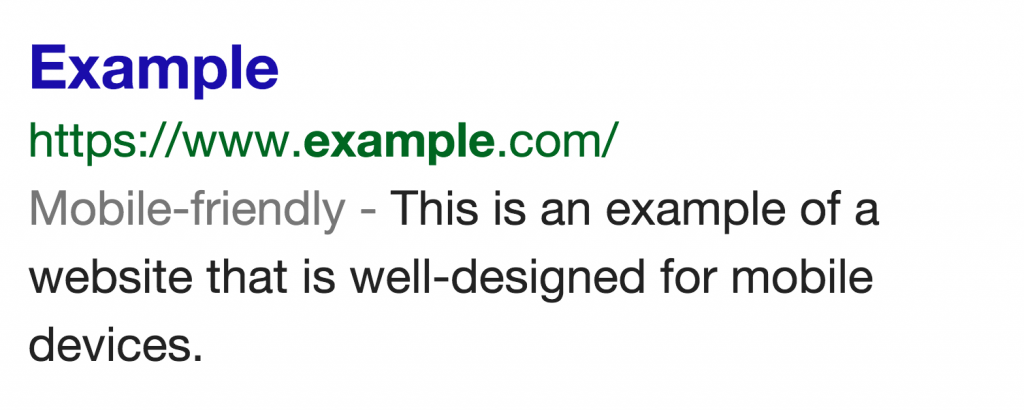As the leader in online search, Google has a lot of clout in deciding which websites see traffic through which results it displays.
To provide the best results, Google has been consistently tweaking its search algorithm, each time changing its definition of what makes a good a result for a search.
From changing the search algorithm to crack down on disingenuous SEO tactics, to implementing new ways to pull out “rich snippets” from websites, the search giant is constantly working to improve our overall web experience and ensure each update brings its users the most relevant information to move closer to fulfilling Google’s mission of:
“organiz[ing] the world’s information and mak[ing] it universally accessible and useful.”
Over the years, these constant changes have had a profound impact on web design, with Google encouraging some techniques and discouraging others.
In this article, we look at the softer side of search engine updates, and how they impact how the web looks.
Above the fold
This update came through on February 6
th, 2014 and is usually called the
Top Heavy Algorithm.
In reaction to websites stuffing the top of their pages with ads to maximize the number of impressions they got (and thus ad revenue) without considering user experience, Google revised its algorithm to push websites with too many ads ‘above the fold’ (read: near the top) down the search engine results page.
So starting in 2014, Google began discouraging websites that practiced this technique by moving them down the results page. The impact of this update was not as straight forward as expected and is a good case-study on why Google is constantly updating their algorithms.
While ad-heavy sites were punished (only about 1% of sites were impacted), the update applied only to static ads, and websites started using modal windows and popups on websites to compensate.
This change in Google search algorithm ended up shifting advertisers focus away from flat, newspaper-styled banner ads and towards engaging, dynamic advertising space that takes a fresh approach for the web and impacted the way most sites are built today.
Mobile first design
The advent of smartphones, especially the launch of the iPhone, changed how we experience the web. As the amount of time spent accessing the internet on mobile grew, so did Google’s appetite for mobile friendly sites.
However, websites continued to be built for desktops as owners did not make the investment to bring their properties up to date.

Google helped catalyze the transition to a mobile friendly web in a big way. In April 2015, Google made the mobile experience a key ranking factor, and in 2016 made mobile design became part of its webmaster guidelines.
In an effort to further improve user’s mobile experience, they have also introduced Accelerated Mobile Pages (AMP), which in Google’s own words are
… great for browsing the web on mobile devices, because webpages built with AMP load an average of four times faster and use 10 times less data than equivalent non-AMP pages. In many cases, they’ll load instantly. It's how reading on the mobile web should be—fast, responsive and fun.

Example of the Google AMP browsing experience
So, how has this influenced design?First, we have seen a notable rise in mobile-friendly websites.
With Google serving up ranking penalties for sites without a proper mobile experience, designing and launching a site with mobile in mind has become essential.
Second, Google has changed what users expect form websites. As a result of its ranking algorithm, the vast majority of websites that we collectively visit every day (since users tend to not venture far from page 1 of results) are mobile friendly.
Now, we expect every site to be responsive, or at least offer up an optimized mobile version.
Other Website Features
There was a time when image carousels were all the rage. On the surface, they alleviated the pain of large organizations choosing what goes on the homepage offering simple elements that provided a sense of interactivity and allowed the rapid changeover of engaging content.
Basically, the carousel let companies change their homepage far quicker than ever before.
The business case was clear as well: with carousels webmasters could take users directly from a generic homepage straight to specific content deep in the site.
However, that’s not quite the reality.
As it turns out, carousels are not effective at driving traffic to interior pages, as seen by their poor click through performance.
 Further, they result in a poor user experience. According to the Nielsen Norman Group, carousels that auto-forward “annoy users and reduce visibility”.
Further, they result in a poor user experience. According to the Nielsen Norman Group, carousels that auto-forward “annoy users and reduce visibility”.
Carousels also confuse the objectives of the page, by giving the user too many options for where to go next.
In addition to these problems, carousels are also terrible for your SEO. Some SEO-specific problems for carousels are:
- They contain multiple H1 tags, which reduces keyword quality
- They push all your content further down the page
- They often render poorly in responsive formats
- They increase load time
- They’re (still!) often built in Flash
While Google never released a specific anti-carousel update, their focus on user experience has continued to punish features that aren’t effective, and encouraged site owners to use features that benefit both the owner and the visitor.
Apart from image carousels, other features have been curbed by Google’s algorithm because they don’t actually provide a good user experience. Another example we’ve seen is parallax scrolling, which we’ve seen have a big novelty value and become an in-demand feature – but also one with limited evidence it helps visitors find what’s relevant to them.
Content strategy
We can’t talk about how Google has influenced web design without talking about content.
Content is king, and even the Google webmaster guidelines outline how important it is. They even explain the basics of content strategy!
Since the Panda updates started in 2011, content has been a key ranking factor for Google.

The major update that’s really driven content strategy (among other things) is that Google doesn’t just look at keyword counts to make sure you’re not spamming.
While keywords remain important, Google now considers other factors like readability, length, and number of ads to judge which page is the best result for the query.
Google also considers a site's reputation, based on inbound/outbound links – how many people link to or from your site and what words they link (referred to as “anchor text”) - which also encourages sites to produce quality content. After all, people don’t link to what they don’t like.
We’ve now reached a point where Google is getting much better at predicting which of its billion potential results will be best, and feeding it to the user. And that has had the biggest impact on web design of any of these areas.
Most websites (even small ones) will have a blog just for SEO purposes. Second, website owners are far more willing to invest in content now than they used to be. Building a business case for content based on SEO improvement is much more tangible now than ever before.
The overarching result is that there’s much more enthusiasm for creating amazing content, just to be more useful to your customers.
Wrap-up
Over the last several years, Google has been actively influencing how we create websites.
Whether they do it explicitly with a stick, like demoting sites with too much above the fold advertising, or implicitly with a carrot, like promoting sites with great content, they’ve taken an undeniably active hand in shaping the internet today.
